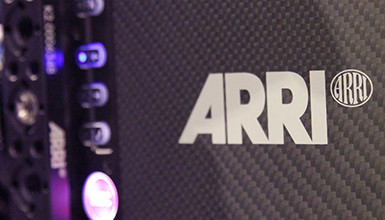alexa
Tech News
Teradek has made a name for itself with its Cube line of wireless video transmitters. The Cube encodes video from HD-SDI sources and HDMI sources, then transmits it over Wi-Fi for viewing on a computer, iPad or other device. I've been very impressed with their progress over the years, and this NAB they announced several new products and features. Their updated Cube is the same size as previous versions, but features a side OLED screen, which shows the Cube's status and allows for quick adjustment of settings.
Tutorials & Guides
When Arri released the SUP 4.0 firmware for the ALEXA, they also added the ability to create color 'Looks' to load into the camera. These Look files are similar to scene files found in other cameras, but they aren't burned into the Log C recording of the camera. Instead, they can be used in post by converting them to LUTs using Arri's LUT Generator. These looks then travel as metadata with the clips recorded (through the XML file). Look files can be created by saving a still from the camera and loading it into the Arri Look Creator, which can then modify the still and output a look.
Tech News
It's been another exciting year in our industry, with lots of evolutionary and revolutionary changes. Many of the trends we've seen coming for the past several years came to fruition in 2011, leaving some to wonder what comes next. Let's take a look back and see if it can help inform us a bit on what's to come in 2012.
Tutorials & Guides
ARRI has released their Anamorphic De-squeeze download license for purchase. This eagerly anticipated license for the ALEXA will correct the "squeeze" effect that occurs when shooting with anamorphic lenses. With the license installed, ALEXA and ALEXA Plus cameras with the Software Update Packet (SUP) 4.0 can now readily accept anamorphic lenses with 1.3x or 2x magnification.
Tech News
The ARRI ALEXA has become so popular that many clients are asking to use it in ways outside of the traditional Digital Cinema market. Documentary and ENG-style productions, long the playground of 2/3" cameras, are now beginning to use the ALEXA. With this demand, AbelCine has worked to adapt the camera to the style of "One Man Band," everything-on-the-camera shooting.
Tutorials & Guides
A few weeks ago, Jesse Rosen wrote an article explaining the technical definition of LOG-encoded video and how it differs from a viewing gamma such as REC709. To better understand how you might use LOG capture in production, I shot this video illustrating the differences.
Tools, Charts & Downloads
ARRI Digital has created a series of online resources for the ALEXA camera. These tools are designed for operators to get the most out of the camera. ARRI will be creating more of these tools in the future, and we will continue to bring them to you here.
Tools, Charts & Downloads
Numerous cameras available today feature a "35mm-sized sensor." How is this defined? They all vary slightly in size, and some are shaped differently so that, when used for HD shooting, the usable size is dramatically reduced. Our clients frequently ask how to compare these different cameras and how sensor size affects field of view and lens coverage. On this topic, words and numbers can be difficult to interpret, so AbelCine decided to produce a graphical chart to better compare areas of coverage.
- Previous
- Page 4 of 4






















